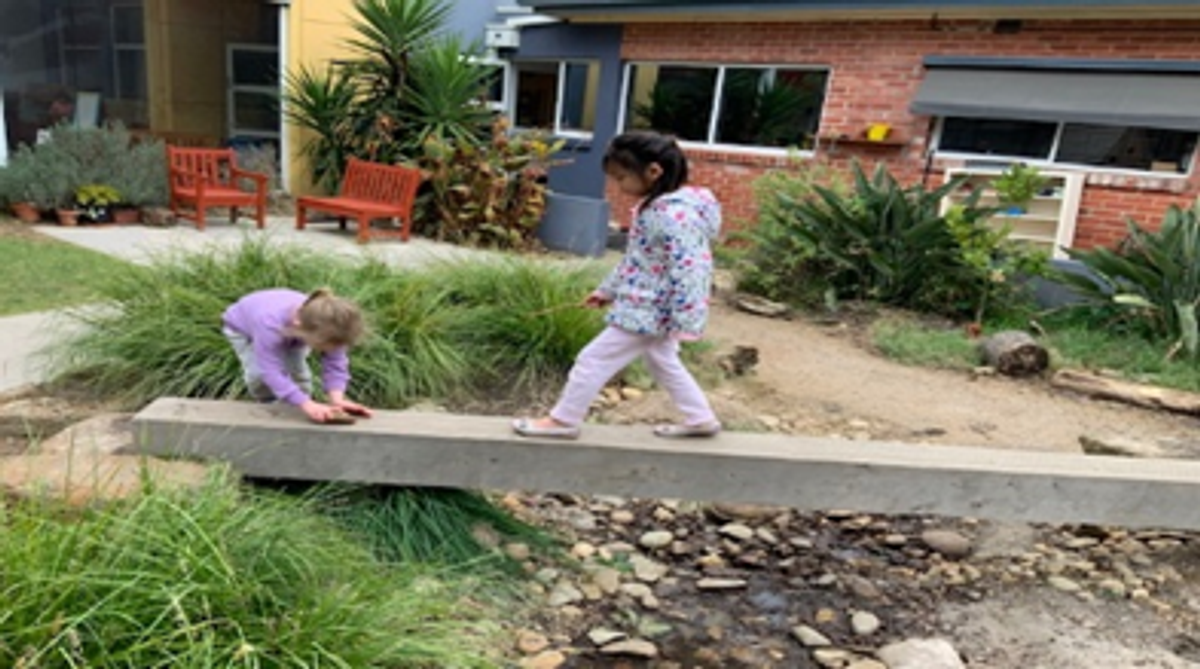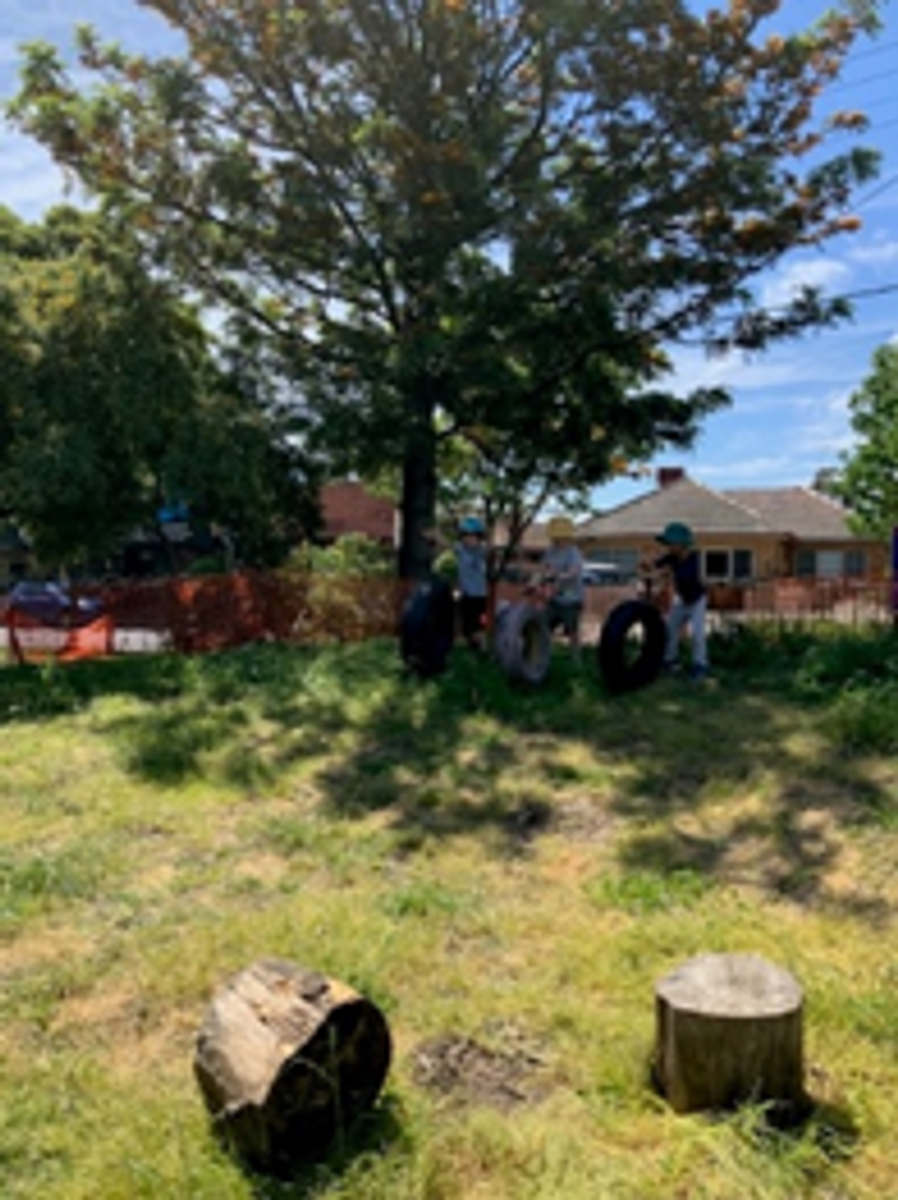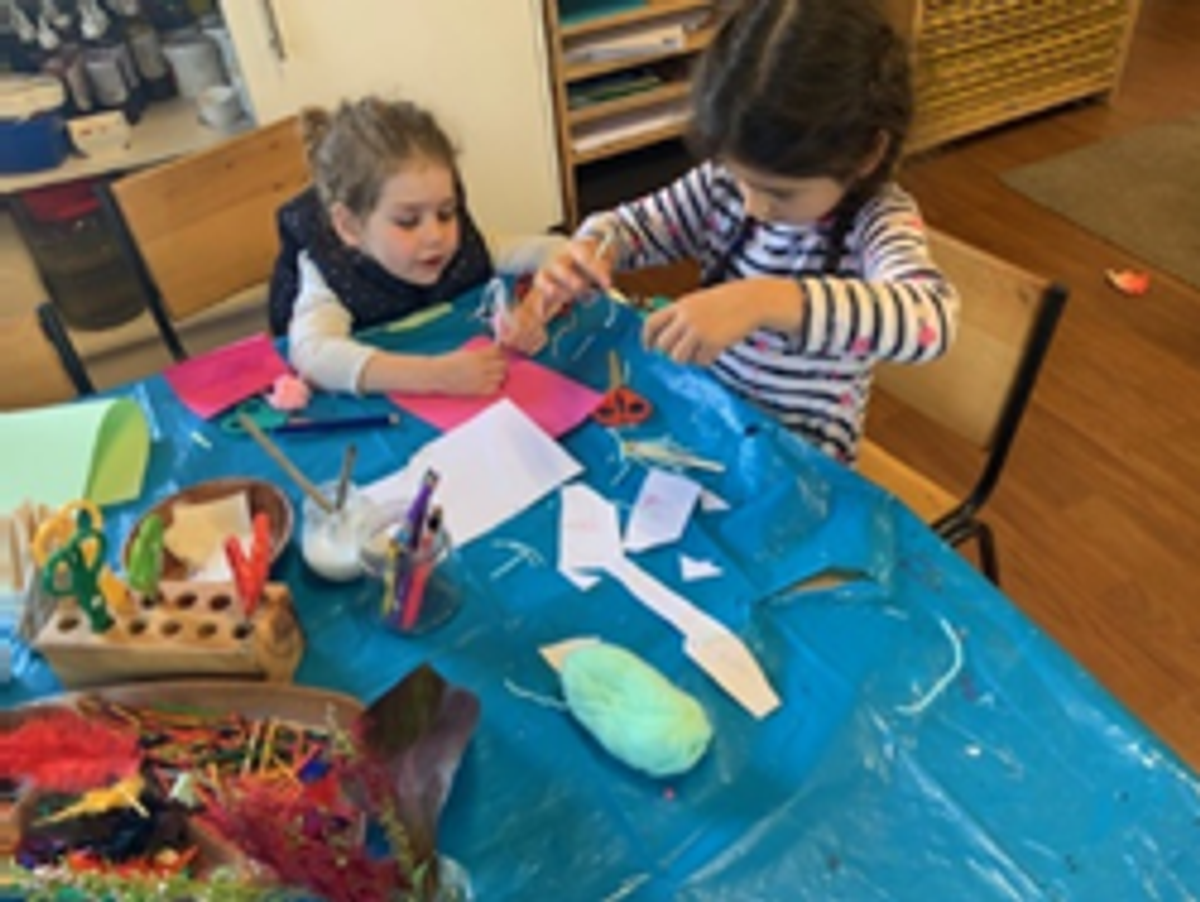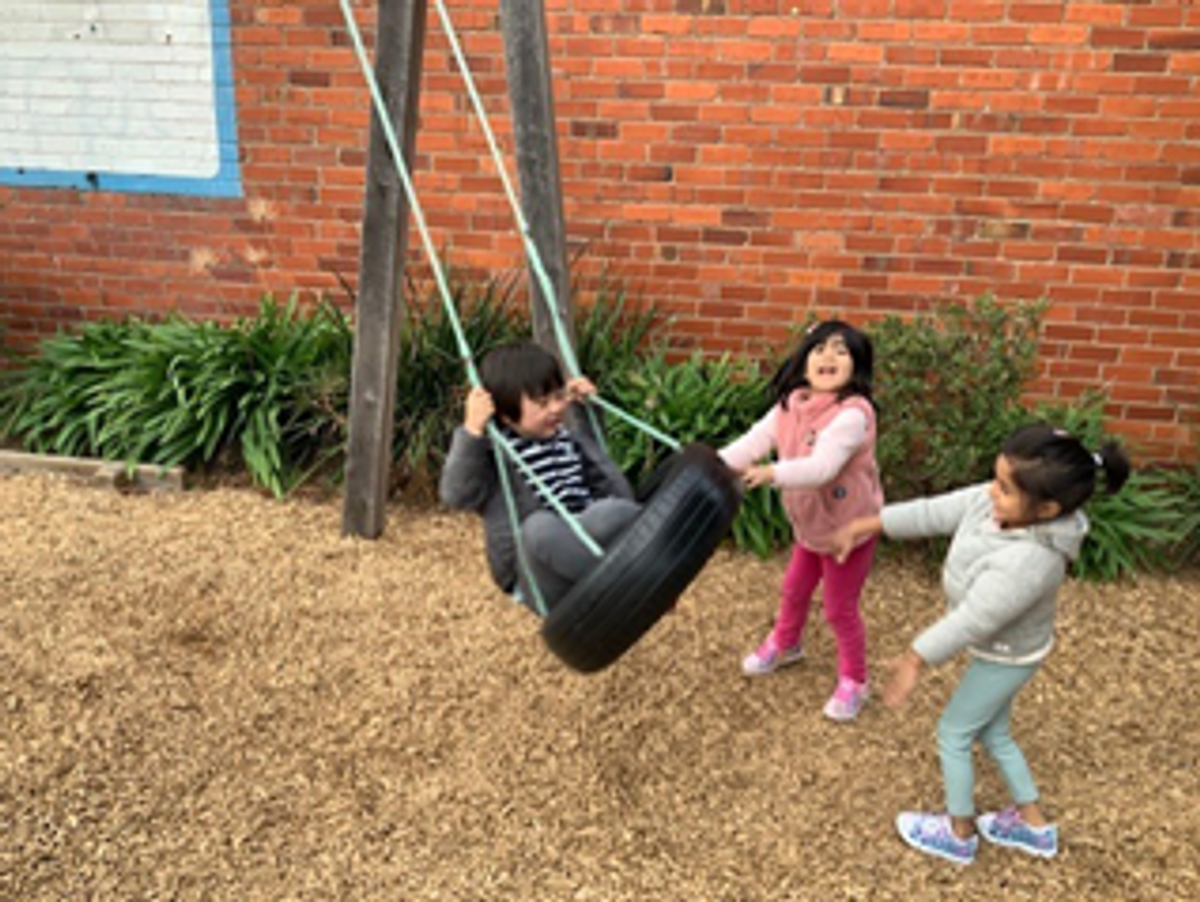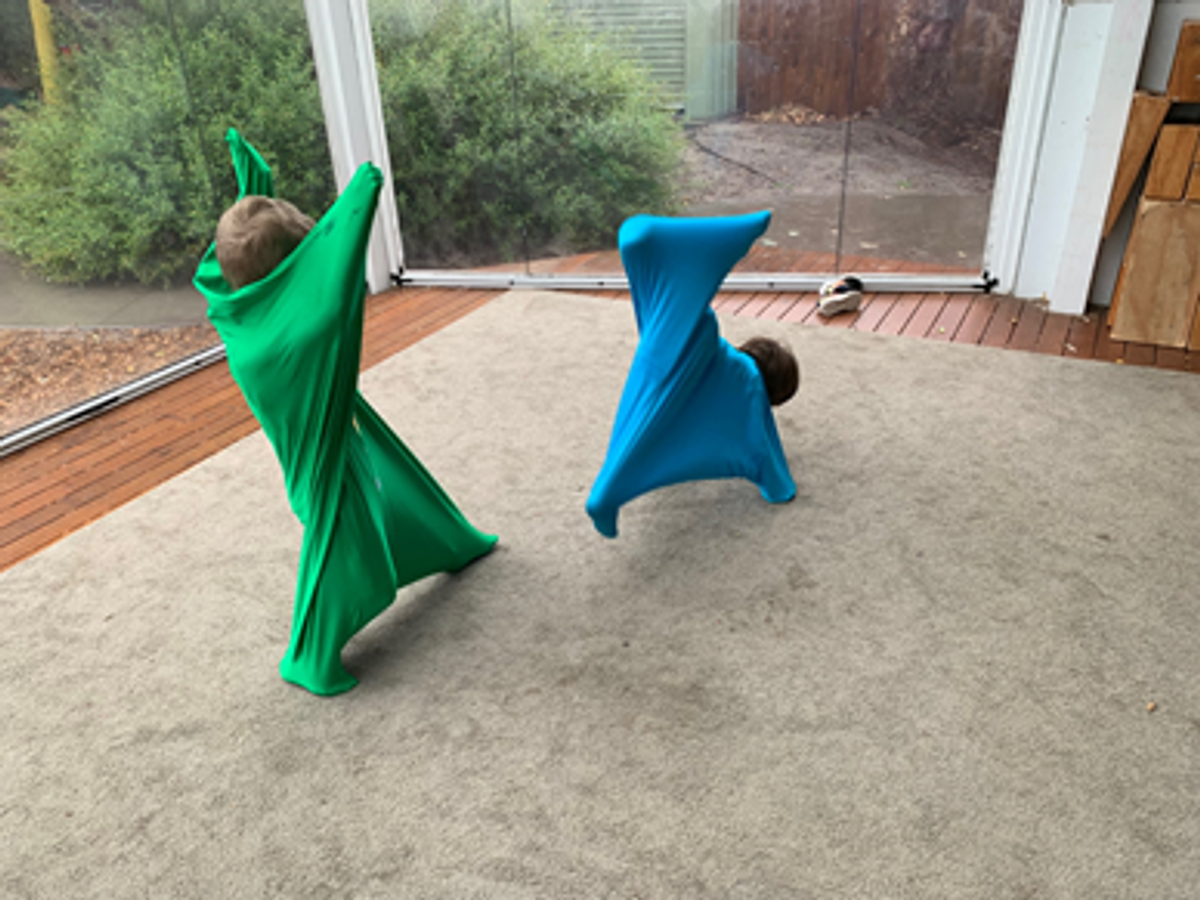GEKA McKinnon
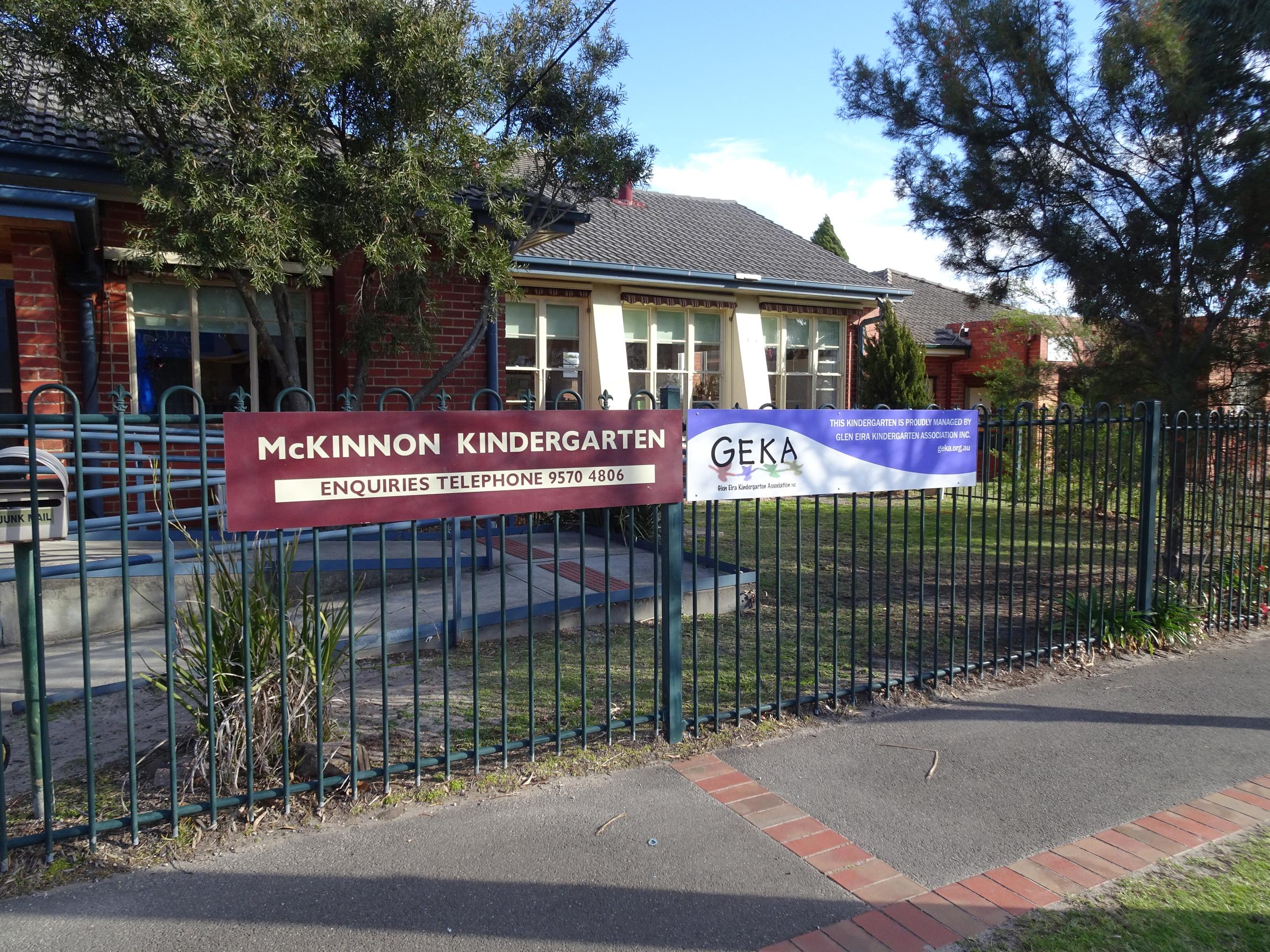
Environments that support safe risk taking
By Sharon Cashmore
What are the benefits of risky play? Let’s take a moment to define risk as ‘’exposure to danger’’ and define play as “engagement in an activity for enjoyment”. On paper these two words combined may not make a lot of sense, but early childhood educators view risky play as a chance for children to further develop and to become strong in their wellbeing. It’s a chance for children to develop their skills, build on their resilience, their cognitive abilities, and develop as individuals.
As you enter GEKA McKinnon Kindergarten, it’s fair to say that most of our kindergarten children and families are in awe of our incredible outdoor environment- we are too! The opportunities to engage in risky play are already available in the yard and that’s without the team of educators setting the yard up with strategic learning play spaces which invite children to explore and to be challenged. Our natural play areas include a large mud patch, that is adjacent to a riverbed of stones, with a water pump and a wooden freestanding plank to walk across.
The trees at the kindergarten provide us with shade and are so large that the children often climb the trees to just relax in or with adult supervision jump out from the trees onto large mats to build on their gross motor skills.
As we continue to explore the environment, we pass a large grassy hill at the kindergarten. Here we have witnessed the children climbing into barrels and rolling down the hill whilst safely tucking their bodies into the barrels or maneuvering tires down the hill and running out of the way so as not to get hurt. We have swings, cubby houses, we have a sandpit with metal spades and diggers, all of which the children enjoy playing with time and time again.
How can we promote risky play in this amazing environment? Are the risks already there? Is it that, as educators, we need to continue to “set-up” these risky play spaces? What do the children think about taking risks and challenges?
This year in the Kookaburra group, we found that many children preferred to stay indoors during the day and whilst that is their choice, we thought we could introduce ‘little challenges’ throughout the day to encourage more ‘risk taking’. For some children that meant merely playing outside during the session. So, perhaps ‘risky play’ is just trying something new, perhaps it’s about making new discoveries, and that it doesn’t have to be ‘dangerous’ but something ‘different’ to engage in. Perhaps our amazing yard already supports risky play as it is.
What about our indoor kindergarten environment, does it promote risky play?
The children learn to use scissors appropriately and safely.
The children engage in activities with nails and hammers and understand they need to wear shoes inside so as not to step on a nail. Designing and building large and tall block towers, could potentially fall and hurt a child, so how can we as educators support this play safely? We want the children to be creative, yet safe, perhaps it is best to ask the children what they think?
Anna says “We can make it as tall as us”
Rooney says “We just move away and make sure it can’t fall on anyone”
The benefits of risky play include promoting children’s motor skills, problem solving, children learning to assess, make judgements and decisions regarding risks.
Here are some other thoughts/observations from our wonderful educators at GEKA McKinnon:
By Megan Wiwatowski
Risk taking is a healthy part of development in early childhood. Our role as educators is to establish and maintain a safe physical environment in which children have the opportunity to challenge their physical abilities and to achieve that feeling of ‘I did it!’ when they master a new skill for the first time.
Over the course of the year, we change learning experiences and offer new ones to provide different challenges and to respond to the evolving skill and confidence levels of individual children within our group.
It’s not always easy to do, but when we step back and observe children, we often find that they are very capable of navigating thoughtfully designed yet challenging play spaces on their own.
By Wen Shen
In this photo, Eda and Raaga were pushing the swing Miru was sitting on. There is risk in pushing someone on the swing, as there was a possibility that Eda and Raaga may get hit by the swing, or Miru could lose control of the swing and fall. However, the children were reminded regularly of safe play boundaries - Miru to hold the swing ropes tightly and remain sitting on the swing, Raaga and Eda to be aware of their positions and surroundings, plus close adult supervision, the risk of any kind of injury is minimised. Participating in this experience has brought great benefits to all three children; they gained a stronger sense of social, emotional and physical wellbeing.
By Jo Elmer
Sometimes the children in the Kangaroo group are overwhelmed with energy, especially when it's raining and the area is limited. So, to support the children to release the built-up energy in a safe but risky play way, the team organise body sock play. This play consists of four children at a time, a carpet space free of obstacles, four body socks and an Educator/Teacher calling out the play. This can include:
- the children stand inside it and push against the sides with his hands, or lay down and push with their feet
- crab walk/ jogging
- star- Jumps
- yoga poses
- superman: lying on the floor on your belly, stretch your arms up off the ground in front of you and your legs up off the ground behind you
- play a “dance and freeze” game
By Denise Ricardo
“I fell on top of him!” shouted Harvey.
“I never want to do that again!” laughed Charlie.
Oliver and James rolled Harvey and Charlie to the top of the hill and rolled them down. Harvey discovered that he didn’t have to wait for another child to push him down. That if he moved his body forward the barrel would roll down the hill by itself. “That was crazy!” he shouted with glee.
James and Oliver were happy to push but said it was too scary for them to roll in the barrel.
Charlie and Harvey play for a long-time taking turns to roll each other. The only safety reminder they needed was to listen to the person in the barrel especially if they cried out to stop!
Risky play and difficult challenges are so important for children as it enables children to feel a sense of accomplishment. It empowers children to feel like they can do anything, by building on their confidence and self-esteem.
By supporting children to engage in risky play, it sends the message that we trust and support them in their development. There may be moments when children feel a bit nervous trying something risky or something new, but if we let them know we can help them when needed, children will feel like there’s nothing stopping them.

